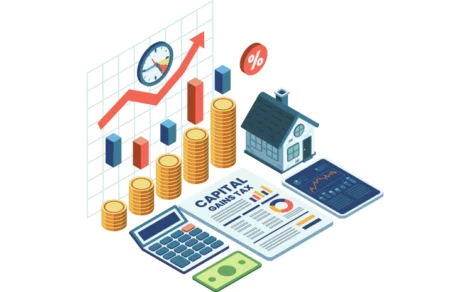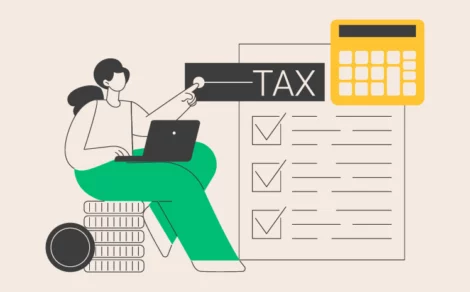Tax filing is an essential financial responsibility for every earning individual in India. With the introduction of the New Tax Regime in Budget 2020, taxpayers now have the option to choose between the existing Old Tax Regime and the new one. This has led to considerable confusion about which regime is more beneficial.
This blog provides an extensive comparison of the new tax regime vs old tax regime, their tax slab structures, deductions, and exemptions available, along with a practical example to illustrate the tax liability under both systems.
Understanding the Tax Slabs
The fundamental difference between the two regimes lies in their tax slab structures and the availability of exemptions and deductions.
Old Tax Regime
Benefits of Old Tax Regime
Allows multiple exemptions and deductions: Taxpayers can claim deductions under various sections like 80C, 80D, and 24B, significantly reducing their taxable income.
Encourages long-term savings: Investments in Public Provident Fund (PPF), Employee Provident Fund (EPF), National Pension System (NPS), and Life Insurance Policies help build wealth over time.
Tax benefits for salaried individuals: Those receiving HRA (House Rent Allowance) and LTA (Leave Travel Allowance) can enjoy exemptions under the Old Regime.
Home loan benefits: Interest paid on home loans qualifies for deductions under Section 24B, making it attractive for property buyers.
Medical insurance and healthcare benefits: Section 80D allows deductions on medical insurance premiums for self, family, and parents, reducing financial burdens.
Reduces tax liability through structured planning: With proper tax planning, individuals can significantly lower their tax outgo by maximising deductions and exemptions.
Under the Old Tax Regime, taxpayers could claim various deductions and exemptions such as Section 80C, 80D, HRA (House Rent Allowance), and LTA (Leave Travel Allowance) to reduce their taxable income. The tax slabs under this tax regime are as follows:
| Income Slab (INR) | Tax Rate |
| Up to ₹2.5 lakh | Nil |
| ₹2.5 – ₹5 lakh | 5% |
| ₹5 – ₹10 lakh | 20% |
| Above ₹10 lakh | 30% |
New Tax Regime
Benefits of New Tax Regime
Lower tax rates: The new regime provides reduced tax rates across various income slabs, potentially leading to tax savings for individuals without deductions.
Simplified tax filing: Since most deductions and exemptions are removed, taxpayers do not have to track multiple documents or investment proofs.
Greater liquidity and flexibility: Unlike the Old Regime, taxpayers are not required to lock their funds in specific tax-saving instruments, allowing for more financial freedom.
Ideal for high-income earners without investments: Those who do not claim deductions under 80C, 80D, or home loan benefits can benefit from a lower tax burden under the new structure.
Reduced compliance burden: No need to invest in specific schemes like PPF or NPS solely for tax savings, giving individuals the choice to invest as per their financial goals.
No complex tax planning required: As exemptions are eliminated, individuals can focus on straightforward tax calculations without worrying about tax-saving strategies.
The New Tax Regime offers lower tax rates but eliminates the majority of exemptions and deductions available under the Old Regime. The revised tax slabs under the new regime are:
| Income Slab (INR) | Tax Rate |
| Up to ₹3 lakh | Nil |
| ₹3 – ₹7 lakh | 5% |
| ₹7 – ₹10 lakh | 10% |
| ₹10 – ₹12 lakh | 15% |
| ₹12 – ₹15 lakh | 20% |
| Above ₹15 lakh | 30% |
Key Differences Between the Old and New Tax Regime
Exemptions and Deductions
One of the biggest differences is that under the old tax regime, taxpayers can claim various deductions, while the new tax regime removes most exemptions. Below is a comparison:
| Deduction / Exemption | Old Tax Regime | New Tax Regime |
| Standard Deduction (₹50,000) | Available | Available |
| Section 80C (₹1.5 Lakh) | Available | Not Available |
| Section 80D (Medical Insurance) | Available | Not Available |
| HRA (House Rent Allowance) | Available | Not Available |
| LTA (Leave Travel Allowance) | Available | Not Available |
| Interest on Home Loan (Section 24B) | Available | Not Available |
Suitability for Different Taxpayers
Old Tax Regime: More suitable for individuals who have high deductions (like home loans, HRA, 80C investments, insurance premiums, etc.).
New Tax Regime: Beneficial for taxpayers who do not claim multiple deductions and prefer a simplified tax structure.
Let’s understand with a few examples:
Example 1:
An individual earns ₹10 lakh per annum. To better understand the impact of both tax regimes, let’s calculate tax liability for the individual under both regimes-
As per old tax regime,
Assumptions:
- Standard Deduction: ₹50,000
- 80C Deduction: ₹1,50,000
- 80D Medical Insurance: ₹25,000
- Home Loan Interest (Section 24B): ₹2,00,000
- Total Deductions: ₹4,25,000
Taxable Income: ₹ (10,00,000 – 4,25,000) = ₹5,75,000
| Income Slab (INR) | Tax Rate | Tax Payable (INR) |
| ₹0 – ₹2.5 lakh | Nil | 0 |
| ₹2.5 – ₹5 lakh | 5% | ₹12,500 |
| ₹5 – ₹5.75 lakh | 20% | ₹15,000 |
| Total Tax Payable | ₹27,500 |
After adding 4% cess, total tax liability = ₹28,600
As per new tax regime,
Since no deductions are allowed (except the standard deduction of ₹50,000), taxable income is: ₹ (10,00,000 – 50,000) = ₹9,50,000
| Income Slab (INR) | Tax Rate | Tax Payable (INR) |
| ₹0 – ₹3 lakh | Nil | 0 |
| ₹3 – ₹7 lakh | 5% | ₹20,000 |
| ₹7 – ₹9.5 lakh | 10% | ₹25,000 |
| Total Tax Payable | ₹45,000 |
After adding 4% cess, total tax liability = ₹46,800
In this example, the individual benefited from the old tax regime by leveraging various deductions, resulting in a significantly lower tax liability compared to the new regime.
Example 2:
Let’s understand with another example of a person earning ₹20 lakh per annum. To better understand the impact of both tax regimes, let’s calculate tax liability for the individual under both regimes-
As per old tax regime,
Assumptions:
- Total Deductions: ₹4,25,000 (same as above)
Taxable Income: ₹ (20,00,000 – 4,25,000) = ₹15,75,000
| Income Slab (INR) | Tax Rate | Tax Payable (INR) |
| ₹0 – ₹2.5 lakh | Nil | 0 |
| ₹2.5 – ₹5 lakh | 5% | ₹12,500 |
| ₹5 – ₹10 lakh | 20% | ₹1,00,000 |
| ₹10 – ₹15.75 lakh | 30% | ₹1,72,500 |
| Total Tax Payable | ₹2,85,000 |
After adding 4% cess, total tax liability = ₹2,96,400
As per new tax regime,
Taxable Income = ₹19,50,000
| Income Slab (INR) | Tax Rate | Tax Payable (INR) |
| 0 – ₹3 lakh | Nil | 0 |
| ₹3 – ₹7 lakh | 5% | ₹20,000 |
| ₹7 – ₹10 lakh | 10% | ₹30,000 |
| ₹10 – ₹12 lakh | 15% | ₹30,000 |
| ₹12 – ₹15 lakh | 20% | ₹60,000 |
| ₹15 – ₹19.5 lakh | 30% | ₹1,35,000 |
| Total Tax Payable | ₹2,75,000 |
After adding 4% cess, total tax liability = ₹2,86,000
In this case, the old tax regime resulted in a higher total tax liability compared to the new tax regime. Thus, for this individual with a salary of ₹20 lakh per annum, the new tax regime is the more favourable option due to the lower overall tax burden, despite the lack of deductions.
Analysis: Which Tax Regime is Better?
Choosing between the old tax regime and new tax regime depends on an individual’s financial situation and tax-saving preferences. Here’s a breakdown:
When is the old tax regime better?
- If you utilize various deductions such as 80C (Investments), 80D (Medical Insurance), HRA, and Home Loan Interest.
- If you have significant expenses that qualify for tax exemptions.
- If you are comfortable with structured savings through tax-beneficial instruments like PPF, EPF, and insurance.
When is the new tax regime better?
- If you prefer simplicity in tax filing without tracking multiple exemptions and deductions.
- If your income is high but you do not have substantial tax-saving investments.
- If you want more liquidity and flexibility in your financial planning rather than locking funds in tax-saving schemes.
Final Verdict
For salaried individuals with multiple deductions → The Old Tax Regime may provide more benefits.
For individuals with fewer tax-saving investments → The New Tax Regime with lower tax rates is likely more beneficial.
Ultimately, taxpayers should use an old vs new tax regime calculator to determine their exact tax liability under both regimes before filing their taxes and make a calculated call.
For more such informational articles, stay tuned with Torus Digital!








